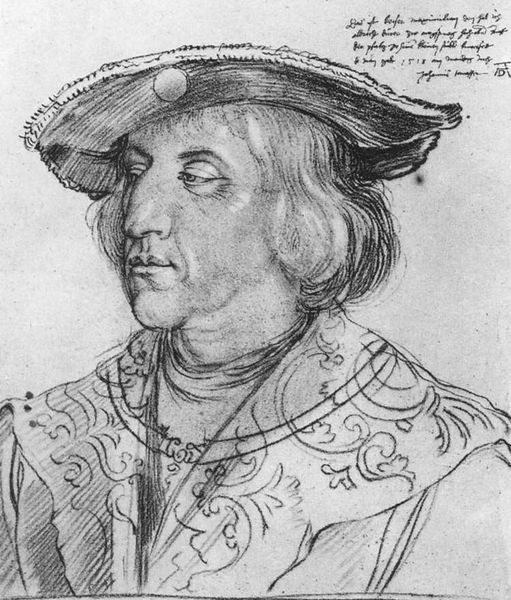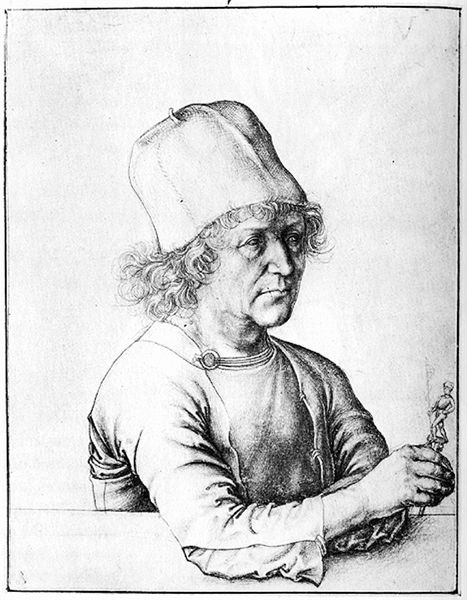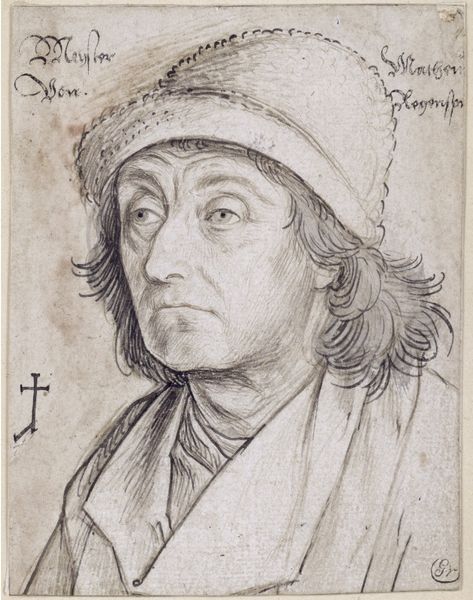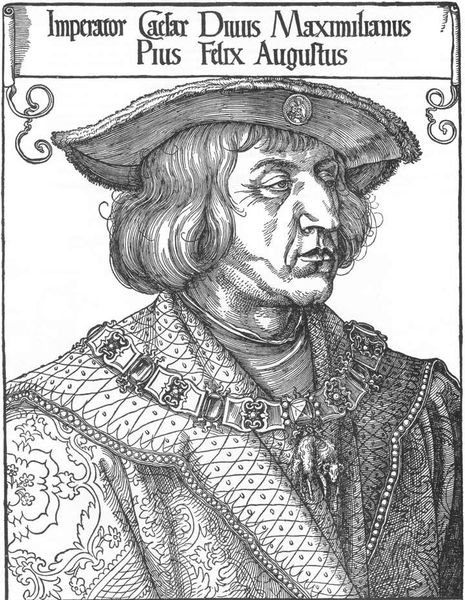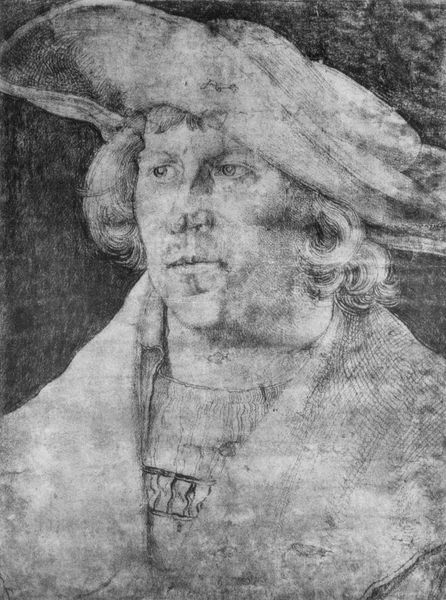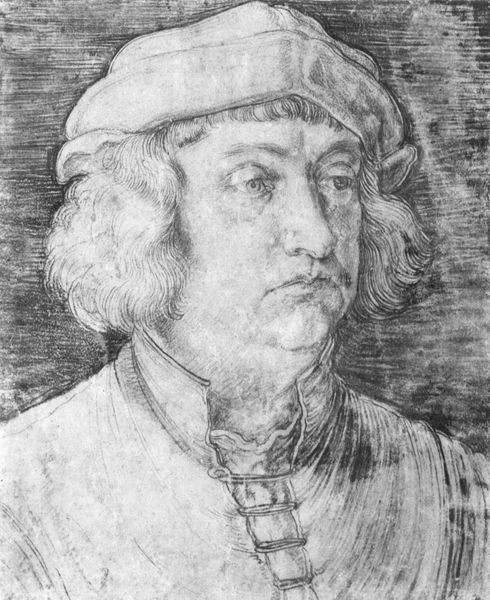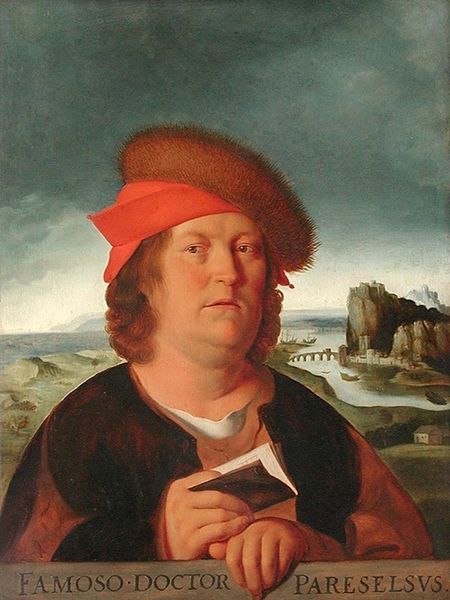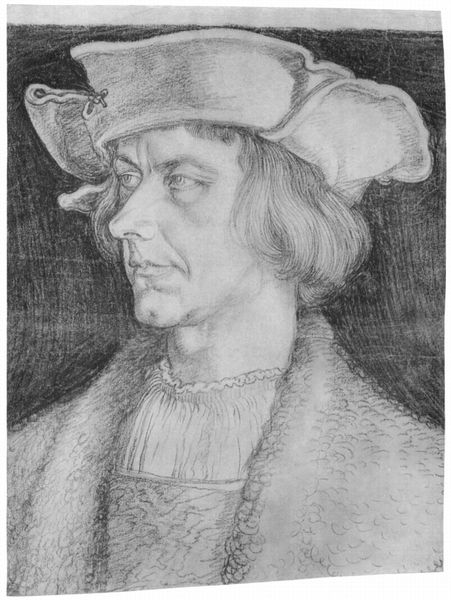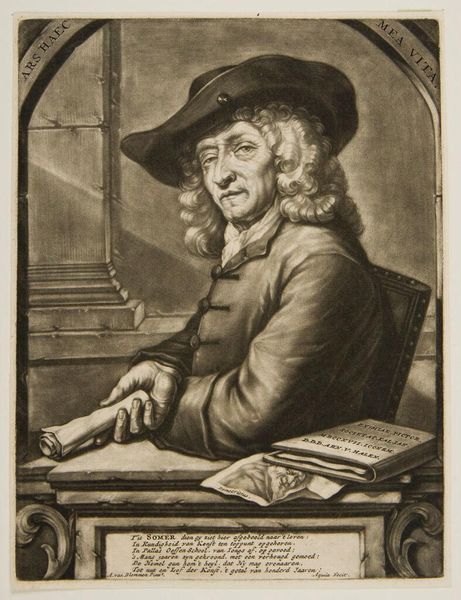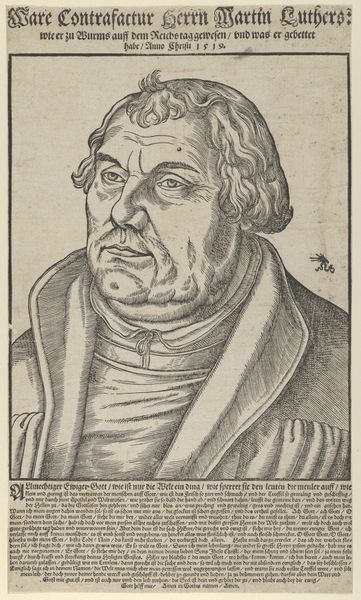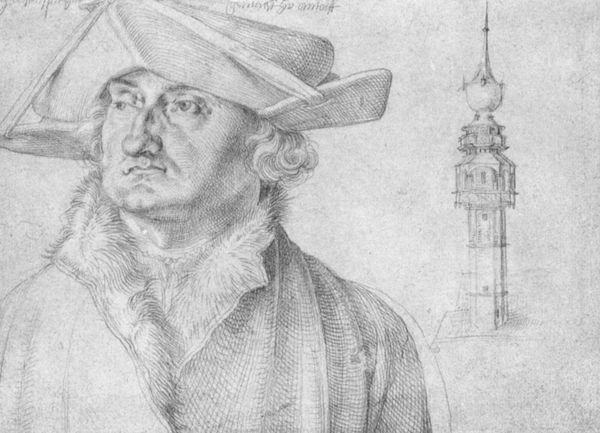
Portrait of the goldsmith Jörg Seld in three-quarter profile to the right 17th century
0:00
0:00
drawing
#
portrait
#
drawing
#
facial expression drawing
#
baroque
#
portrait image
#
portrait
#
figuration
#
male portrait
#
portrait reference
#
portrait head and shoulder
#
portrait drawing
#
facial study
#
facial portrait
#
digital portrait
Dimensions: 136 mm (height) x 115 mm (width) (bladmaal)
Editor: So, this drawing is a 17th-century portrait of Jörg Seld, a goldsmith. The artist is unknown. It's just a head and shoulders in ink, and the details are remarkable. He looks rather stern. What do you make of this work? Curator: Well, the details are definitely intriguing, aren't they? The lines practically carve out his features, creating a tangible sense of character. But more than just character, this image presents a lens through which we can view social class and professional identity in the 17th century. Consider: why immortalize a goldsmith in art? What does it mean to preserve his image when so many others go unrecorded? This becomes less about capturing the individual and more about elevating craftsmanship itself. Editor: I never thought of it that way. The fact that he’s a goldsmith does add another layer. Curator: Precisely. We could delve into guild systems of the era, how trades and skills shaped identities, or even reflect on labor as a form of social currency. How might the style and rendering contribute to or challenge those ideas, I wonder? Editor: He looks rather prosperous, given the way he is dressed and that his portrait was commissioned at all. Would it be right to assume it was about confirming his status? Curator: Status certainly plays a role, yes. But it also reflects broader economic shifts and nascent ideas about the individual within a changing social fabric. Portraits were a form of agency for the rising middle class; who got depicted, and how, reflected shifts in power. What do you think it meant for a craftsman, typically uncelebrated, to have this degree of recognition? Editor: It feels almost revolutionary when you put it that way. I came in thinking it was just a portrait, but there is so much more to read into it. Curator: Exactly! It is those intersections that make art history such a vital tool. This is more than just a face; it is a moment captured that still speaks to contemporary power dynamics. Editor: Thank you! That was extremely helpful and really widened my perspective.
Comments
No comments
Be the first to comment and join the conversation on the ultimate creative platform.

